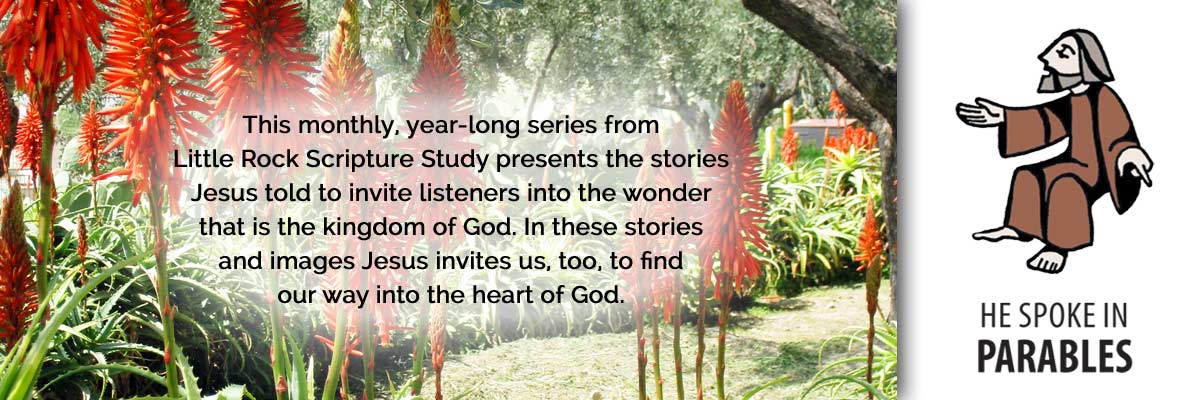Official Website of the
Catholic Diocese of Little Rock
God’s house welcomes sinners of all types
Published: August 19, 2015
This is the eighth column in a 12-part series.
By Cackie Upchurch
Director of Little Rock Scripture Study
In the tradition of God’s people, Israel, the temple in Jerusalem signified the presence of God, in the signs and symbols that were housed in the Ark of the Covenant and in the temple precincts where God’s people gathered. It was a place of reverence, of festival-making, of marking the key events in salvation history.

The psalmist speaks of Jerusalem as a walled city where the temple built by Solomon is God’s dwelling, God’s “resting place” (Psalm 132), and where the tribes of the Lord go up to worship (Psalm 122). In the intervening centuries, the temple would have been destroyed, rebuilt, desecrated and rededicated.
The reconstructed temple in the early first century still would have held pride of place among faithful Jews, including Jesus and his followers. It is little wonder that the temple would be a fitting setting for another parable from Jesus.
Unique to the Gospel of Luke, the story of the Pharisee and the tax collector takes place at the temple (see Luke 18:9-14). Two men come to pray. One prays by thanking God that he is not like others who are greedy, dishonest and adulterous. He goes on to outline his good deeds as proof of his distinction. The other acknowledges that he is a sinner and prays with downcast eyes for God’s mercy.
On the surface, the lesson is clear — the first man’s pride gets in the way of truly encountering God and the second man’s humility draws him directly to God. But there’s more to the story.
The Pharisees emerged in Judaism at first as a lay reform movement. Their goal was to interpret the Law of Moses, the Torah, so that it could be understood and applied over the generations. This oral interpretation eventually was written down in what is known as the Talmud. It was their hope that individual holiness could be available to all God’s people through study of the Torah and obedience to its statutes.
By the time the Gospels were written some 35-50 years after the crucifixion of Jesus, the term “Pharisee” among early Christians came to be associated with those who were self-righteous and who imposed an overly strict adherence to the Law, even on those who were on the margins of society (for example, see Matthew 23:1-39 and Mark 12:35-40). The words that critiqued their hypocrisy were aimed at those leaders whose teachings and actions did not reflect the true spirit of God’s Law given at Sinai.
The Pharisee praying at the temple is a kind of caricature of those who have lost their focus. When we read this parable, we should be amazed not just by his self-righteousness. We might even consider that he is truly thankful that his position has afforded him the opportunity to be obedient to the Law. What should amaze and confound us might be his presumption to judge others merely based on appearance or occupation.
The second man is a tax collector, one whose profession put him in the service of foreign occupiers, the Roman Empire. In the first century, the Jewish people would have rightly assumed that a tax collector was self-interested and dishonest, and wealthy as a result.
His simple acknowledgement of personal sinfulness would have been almost unbelievable to those who originally heard the story.
This story on the lips of Jesus causes his Jewish brothers and sisters to learn that even a tax collector can receive mercy, can be put in right relationship with God, and can sincerely humble himself to enter the sanctuary where his public persona might be judged harshly. This story at the time of the writing of Luke’s Gospel in the latter part of the first century might cause his own community to acknowledge that judging others is not the way of Christ and his followers.
Both men in the parable were welcome at the temple. Pharisees were usually more associated with local synagogues and yet he came to the temple to pray. Tax collectors were Jews in collusion with outsiders and yet he came to the temple to pray.
This collection of “outsiders” is meant to capture the imagination of first century and of 21st century followers of Jesus. It’s meant to cause us to examine the “temples” of our lives to discover who is welcome and who is not. It’s meant to make us wonder about our assemblies too. It’s meant to invite us to accept the generous mercy of God.
Study Questions
- How does the role of the temple in Judaism make it a perfect place to ponder God’s mercy in the use of a story?
- When you read the story of the tax collector and the Pharisee (Luke 18:9-14), with whom do you identify? Why?
- What are some of the factors that allow us to make judgments about the intentions or actions of others? How might we better use that energy in our own spiritual journeys?
- The words of the tax collector, “O God, be merciful to me a sinner,” have become a kind of mantra or repetitive prayer used by many. Do you have any such prayers that you repeat to help you center yourself in God’s presence?
This article was originally published in Arkansas Catholic Aug. 22, 2015. Copyright Diocese of Little Rock. All rights reserved. This article may be copied or redistributed with acknowledgement and permission of the publisher.




